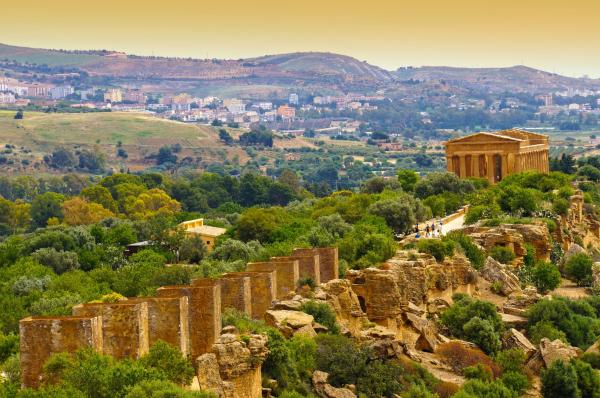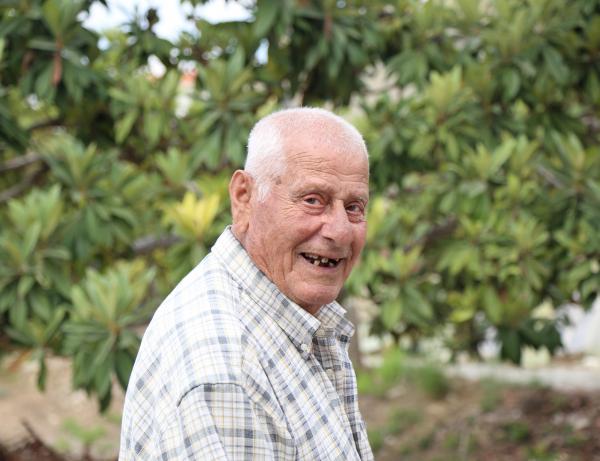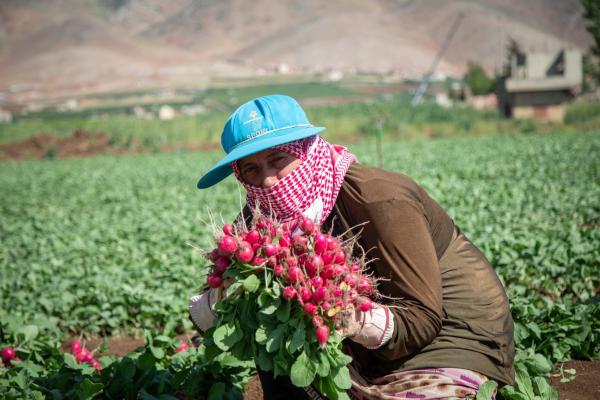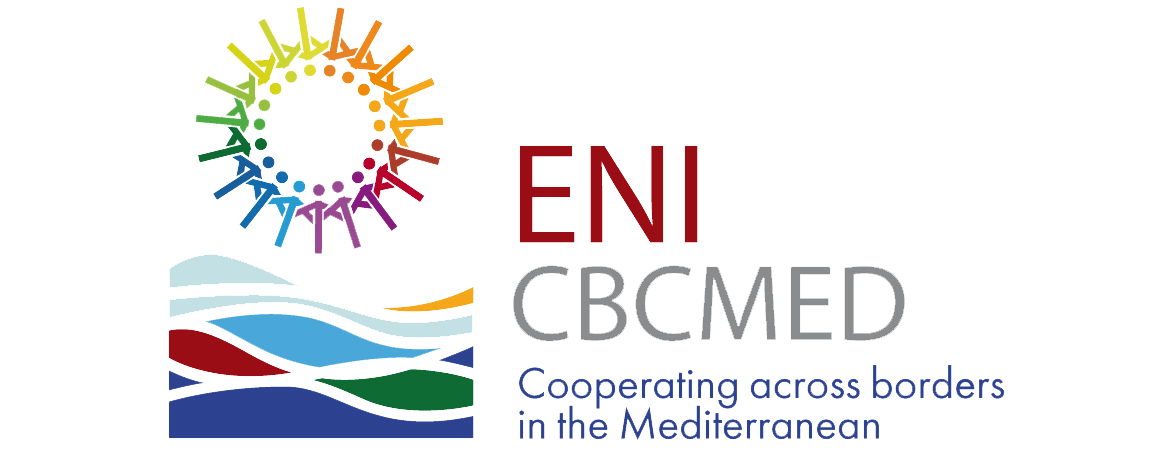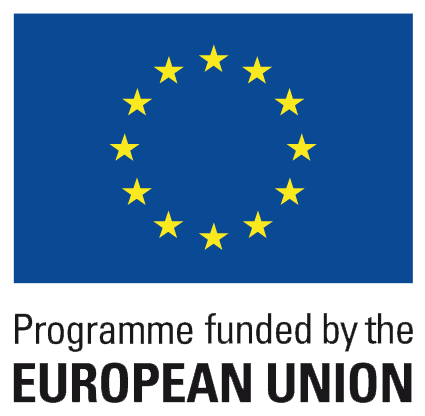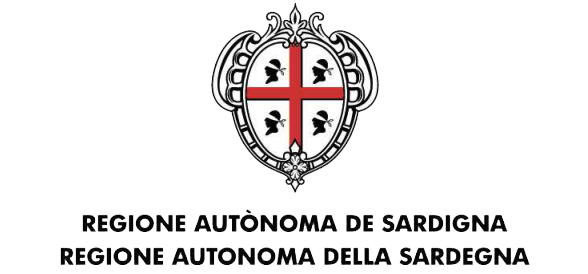The Mediterranean library of knowledge
Explore the ENI CBC Med Programme's library of deliverables: a comprehensive digital repository of diverse resources tailored for the Mediterranean region. Discover in-depth studies, innovative strategies, and practical tools spanning tools addressing key environmental, economic, and social issues. The library is your go-to source to find valuable knowledge to inspire new collaborative projects driving fair, sustainable and inclusive development across the Mediterranean.
Co-Publication: Register of Intangible Cultural Heritage of Mediterranean Countries
The REIM, a joint initiative by the Network of Castles and Medieval Towns and iWORLD ETS, introduces the Register of Intangible Cultural Heritage of Mediterranean Countries. This publication showcases efforts since 2004 to preserve and celebrate Mediterranean heritage, culminating in a digital platform with over 260 listed elements from Sicily, Algarve, Andalusia, Egypt, Jordan, and Lebanon. Through detailed descriptions, images, and videos, the REIM offers an immersive journey into shared traditions, rituals, and crafts, fostering cross-cultural appreciation and collaboration. Additionally, it lays the groundwork for the CRESPIEM: a network aimed at coordinating efforts to safeguard and promote Mediterranean cultural heritage, paving the way for a future of mutual understanding and prosperity.
Co-Publication: Revitalising Heritage Sites Through 3D Modelling: An Analysis of the (iHERITAGE) Project's Outcomes ICT Solutions
This research delves into the innovative technological methods employed within the iHERITAGE project, funded by the European Union through the ENI CBC MED Programme. Focusing on Egyptian cultural heritage revitalization, the study meticulously examines the restoration of key archaeological sites like the Workers' City at the Pyramids and the Solar Boat of Khufu. Through the creation of precise 3D models and immersive virtual representations, emerging 3D imaging platforms are utilized to enhance visitor experiences and preserve these sites. By employing qualitative and quantitative approaches, the research identifies both the benefits and challenges of leveraging technology in the Pyramids area. It underscores the crucial collaboration between graphic designers and archaeologists to develop effective mechanisms for innovation and preservation, ensuring the longevity of these invaluable cultural treasures.
Co-Publication: Urgent Inventory & Documentation of the elements of the ICH of Alexandria
This paper delves into the intersection of science, technology, and cultural heritage, particularly in the context of preserving Alexandria's rich intangible cultural heritage (ICH). Through the collaborative efforts of the Raquda Foundation for Art and Heritage and the Confederation of Egyptian European Business Associations (CEEBA), innovative inventorying and monitoring systems have been deployed to document and safeguard 51 ICH elements in Alexandria. This process not only addresses the challenges of time-consuming documentation but also ensures sustainable preservation and introduces heritage through diverse interpretation methods. By leveraging technology, this initiative underscores the importance of accessibility and the vital role it plays in safeguarding living heritage for future generations.
Co-Publication: (i)HERITAGE - Past and future of UNESCO Cultural Heritage in the Mediterranean Basin
The El legado andalusí Andalusian Public Foundation, in partnership with the iHERITAGE project, is pioneering the interpretation of UNESCO Cultural Heritage using cutting-edge technologies like holograms, Virtual Archaeological Reconstructions, and spherical videos. Their exhibition "Gardens, Heritage, and Dreams," located in the Corral del Carbón building in Granada's historical center, seamlessly combines these innovative technologies with traditional exhibition techniques. Through this immersive experience, the Foundation aims to demonstrate how technology can enhance heritage interpretation while highlighting the significance of historic gardens within UNESCO World Heritage Sites, particularly focusing on Granada's iconic monuments such as the Alhambra, the Generalife, and the Albayzin district.
Co-Publication: Gonçalves, A. & Dorsh, L. (2022) Mediterranean Heritage from the Sea and the Mountains
The publication is a joint publication from the Center of Competences of the Mediterranean Diet that involves the Municipality of Tavira and the University of Algarve. The number 3 of the Magazine was entitled: Identities and Heritage of the Mediterranean. We integrated the editorial board and published an article dedicated to the project.
The creation of the virtual script premise is based on a wide range of distinct experiences, traversing a path that connects a city, where our history is breathed, to the breathtaking lost villages of the Algarve interior. We incentive joining iHERITAGE virtual Route and the participation on the development of training, workshops, and living labs in the areas of culture, communication, and technology, where the team will demystify the idea that the Algarve is just a summer vacation destination and will seek to spread the light of cultural values and the reality that defines the pulse of the Algarve region's identity.
Co-Publication: Exploring The Medicinal Properties of Wild Plants from the Capital of the Nabataeans
This document discusses the application of VR/AR technology in identifying the medicinal properties of wild plants in the Petra region. It highlights the significance of this research in aiding people to recognize beneficial plants while avoiding harmful ones. Additionally, it emphasizes the importance of protecting the Petra region against desertification and climate change. The research findings generated interest from the Petra community during the third B2B event.
Intangible Cultural Heritage in Jordan: Analysis and Future Perspectives
This co-publication delves into the analysis of Intangible Cultural Heritage (ICH) in Jordan, building upon insights gathered from the living labs seminars and training module on Exploring The Medicinal Properties of Wild Plants from the Capital of the Nabataeans. Leveraging the IT expertise of Beeslab and the ICH knowledge of the authors, the publication examines Jordan's rich ICH landscape, drawing from the extensive database of the Ministry and the fruitful discussions held during the living labs seminars.
Exploring the Future of Cultural Preservation: AR/VR Living Lab Publication
The publication is a direct response to the collaborative efforts and insights gathered during the seminars and training sessions of the living labs. It specifically addresses the discussions held within the groups regarding the most effective ways digital technologies can contribute to the promotion and preservation of tangible cultural heritage in sites like Petra. Drawing upon the contributions and ideas of researchers from these sessions, the publication aims to explore innovative products that leverage digital technologies to enhance tourism promotion and heritage preservation efforts.
Investigation of the underground Building heritage and the Mechanism of water flowing in quanats in Palermo through innovative surveying techniques
The paper outlines the challenges in valorizing, protecting, and preserving underground building heritage, particularly focusing on the intricate qanāt structures in Palermo. These structures, known as "horizontal wells" or "well tunnels," offer significant insights into the city's water culture throughout history. The research involves historical and constructive analyses, along with advanced measurement and 3D representation techniques, to initiate restoration efforts and reintegrate these qanāts into the heritage network. Supported by the iHERITAGE project, funded by the ENI CBC MED Programme, the paper presents initial restoration outcomes and a procedural workflow for data acquisition, analysis, and 3D virtual navigation of hypogeal environments. Utilizing SLAM technology and a virtual reality platform within UnReal Engine, the research enables immersive exploration of these underground spaces, supplemented by informative infographics for enhanced visitor engagement.
The Roman Archeological Layer of Byblos within the iHERITAGE Perspective
A collaborative publication by the American University of Technology and Dr. Rola A. Saadi, with contributions from Dr. Evan Fakhoury, explores the utilization of AR/VR techniques to reinterpret and present historical sites. Byblos, one of the oldest cities globally and a UNESCO World Heritage site, benefits from these innovative tools through the iHERITAGE project. The project aims to enhance visitor experiences and appreciation of cultural heritage sites across various Mediterranean cities. Specifically, it focuses on revitalizing significant historical periods such as the Roman era in Byblos, promising new insights and experiences for the public.
Co-Publication: Byblos at the Birth of Settled Life
This paper provides an in-depth exploration of various facets of life in Byblos, spanning from the Neolithic to the Chalcolithic period. It delves into the emergence of settled communities, architectural developments, settlement expansion, and continuity over time. Additionally, the study investigates topics such as societal dynamics, rituals, and burial practices, shedding light on life and death in prehistoric Byblos. Through the lenses of prehistoric archaeology and anthropology, the origins and enduring legacy of this ancient city are examined. The study also incorporates existing archaeological drawings while proposing new illustrations and reconstructions to enrich our understanding of Byblos' fascinating history.
Register Of The Intangible Heritage Of The Mediterranean Inventorying 50 Lebanese Intangible Cultural Heritage Elements
The co-publication focuses on establishing and maintaining the Register of the Intangible Cultural Heritage of the Mediterranean as part of the broader iHERITAGE project under the ENI CBC "Mediterranean Sea Basin Programme." It delves into the collaborative efforts between Saint-Joseph University of Beirut (USJ) and the Chamber of Commerce, Industry, and Agriculture of Beirut and Mount Lebanon (CCIABML) in Lebanon to identify, document, describe, photograph, and videotape 50 Lebanese intangible cultural heritage elements. Additionally, it covers the process of obtaining community consent and integrating the gathered materials into a platform for publication. Overall, the co-publication aims to highlight the significance of preserving and promoting intangible cultural heritage across the Mediterranean region through collaborative initiatives like the Register.




